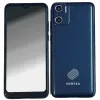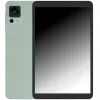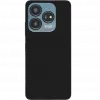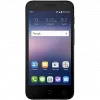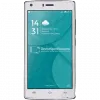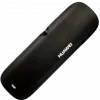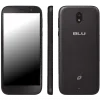Universal Mobile Telecommunications System (UMTS) is one of the third-generation (3G) mobile telecommunications technologies, which is also being developed into a 4G technology. It is specified by 3GPP and is part of the global ITU IMT-2000 standard. The most common form of UMTS uses W-CDMA (IMT Direct Spread) as the underlying air interface but the system also covers TD-CDMA and TD-SCDMA (both IMT CDMA TDD). Being a complete network system, UMTS also covers the radio access network (UMTS Terrestrial Radio Access Network; UTRAN), the core network (Mobile Application Part; MAP) as well as authentication of users via USIM cards (Subscriber Identity Module).
Unlike EDGE (IMT Single-Carrier, based on GSM) and CDMA2000 (IMT Multi-Carrier), UMTS requires new cell towers and new frequency allocations. However, it is closely related to GSM/EDGE as it borrows and builds upon concepts from GSM. Further, most UMTS handsets also support GSM, allowing seamless dual-mode operation. Therefore, UMTS is sometimes marketed as 3GSM, emphasizing the close relationship with GSM and differentiating it from competing technologies.
The name UMTS, introduced by ETSI, is usually used in Europe. Outside of Europe, the system is also known by other names such as FOMA or W-CDMA. In marketing, it is often just referred to as 3G.
UMTS, using W-CDMA, supports maximum theoretical data transfer rates of 21 Mbit/s (with HSDPA), although at the moment users in deployed networks can expect a transfer rate of up to 384 kbit/s for R99 handsets, and 7.2 Mbit/s for HSDPA handsets in the downlink connection. This is still much greater than the 9.6 kbit/s of a single GSM error-corrected circuit switched data channel or multiple 9.6 kbit/s channels in HSCSD (14.4 kbit/s for CDMAOne), and—in competition to other network technologies such as CDMA2000, PHS or WLAN—offers access to the World Wide Web and other data services on mobile devices.
Precursors to 3G are 2G mobile telephony systems, such as GSM, IS-95, PDC, CDMA PHS and other 2G technologies deployed in different countries. In the case of GSM, there is an evolution path from 2G, to GPRS, also known as 2.5G. GPRS supports a much better data rate (up to a theoretical maximum of 140.8 kbit/s, though typical rates are closer to 56 kbit/s) and is packet switched rather than connection oriented (circuit switched). It is deployed in many places where GSM is used. E-GPRS, or EDGE, is a further evolution of GPRS and is based on more modern coding schemes. With EDGE the actual packet data rates can reach around 180 kbit/s (effective). EDGE systems are often referred as "2.75G Systems".
Since 2006, UMTS networks in many countries have been or are in the process of being upgraded with High Speed Downlink Packet Access (HSDPA), sometimes known as 3.5G. Currently, HSDPA enables downlink transfer speeds of up to 21 Mbit/s. Work is also progressing on improving the uplink transfer speed with the High-Speed Uplink Packet Access (HSUPA). Longer term, the 3GPP Long Term Evolution project plans to move UMTS to 4G speeds of 100 Mbit/s down and 50 Mbit/s up, using a next generation air interface technology based upon Orthogonal frequency-division multiplexing.
The first national consumer UMTS networks launched in 2002 with a heavy emphasis on telco-provided mobile applications such as mobile TV and video calling. The high data speeds of UMTS are now most often utilised for Internet access: experience in Japan and elsewhere has shown that user demand for video calls is not high, and telco-provided audio/video content has declined in popularity in favour of high-speed access to the World Wide Web - either directly on a handset or connected to a computer via Wi-Fi, Bluetooth, Infrared or USB.
